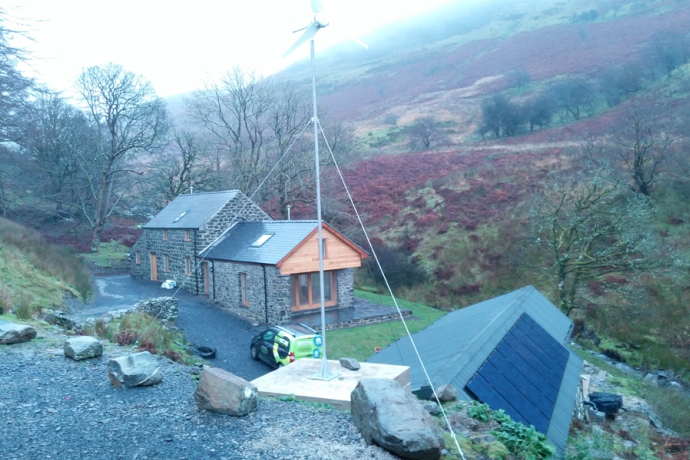Unit 1B, Keynor Farm
Sidlesham, PO20 7LL
8:30am - 5:00pm
Monday - 4:00pm Friday
Blog

How to Design an Off-grid Solar PV System
Content provided by Sunstore Solar.
The drive towards clean energy and sustainability is gathering pace. With the costs of designing your own off-grid system coming down while energy prices are going up, it seems like today could be the perfect time to generate your own energy.
Why Go Off-grid?
There are several reasons why now is the perfect time to design an off-grid PV system.
Those reasons include:
- Solar panels and associated equipment is now much cheaper and more efficient.
- Cost of Grid connection is too high
- Steadily rising energy prices.
- The grid’s continued dependence on fossil fuels.
- The desire for energy independence.
- Sustainability and clean energy production.
Sustainability and going green are laudable motives but are often the least of the reasons we want to generate our own energy. For many, it’s about energy independence. About not being tied to the grid, tied to rising energy prices and opting out of an energy market that doesn’t work for consumers.
What Do You Need for an Off-grid Solar Power System?
An off-grid solar power system is made up of several key components. To be truly off-grid, your system needs to have batteries to store the energy you generate. It will also need solar panels to generate energy and some other equipment to tie it all together.
A typical off-grid electrical system design will look something like this:
- Solar panels and mounting kits for roof or ground mounting.
- Power inverter to turn DC current stored in your batteries into usable AC current.
- Charge controller to manage solar energy conversion.
- Batteries to store the energy you generate.
- Monitoring system so you can manage power generation and usage.
- Emergency generator for backup.
- Network router to connect everything together.
- Cables, fixtures and fittings.
The maturity of the solar power industry means many retailers provide complete solar off-grid kits that contain everything you need to generate your own energy.
How Much Solar Power Do You Need to Generate?
The most important calculation you’re going to have to make in your solar power project is the amount of energy you need to generate. That calculation translates directly to how many solar panels you’ll need to generate that energy. This is the basis of your entire off-grid power system design so you might want to spend more time doing this than anything else.
You need to take into account the energy requirements of any appliances, of any heating or cooling and electrical accessories you use regularly. Fortunately, there are some very accurate solar panel calculators out there that can help you calculate your energy usage to tell you how many solar panels you’ll need.
How Many Batteries Will I Need?
The second most important calculation is around energy storage. How many batteries will you need to be able to efficiently store the energy you generate. You will require enough to cover the total generation potential of your off-grid power system with some set aside for redundancy.
Again, it is well worth the investment of time on this calculation before you buy any batteries to avoid wasting energy or buying batteries you don’t need. Again, there are accurate battery sizing calculators that can do the hard work for you.
How to Select a Charge Controller for Your Solar PV System
A solar charge controller is a device that regulates current between your solar panels and the batteries. It’s job is to ensure a smooth current between panel and battery and to ensure batteries are not overcharged. Solar panels deliver varying current, often between 12v and 40v and the charge controller evens that out so the batteries are not damaged or overcharged.
There are two types of charge controller, PWM and MPPT. If your solar panels deliver the same voltage as your battery, i.e., they are both 12v, you can use a PWM charge controller. If that voltage differs, i.e. your solar panels deliver 40v and your batteries 12v, you need to use an MPPT charge controller to convert the voltage.
There is a simple calculation to identify the size of charge controller you need: Solar panel generation in watts divided by battery bank storage voltage plus 25% for safety.
Choosing a Solar Power Inverter
The final major piece of off-grid power system design is selecting a power inverter. An inverter’s job is to turn DC energy stored in your batteries into AC power that is usable by your property or transferable to the grid.
Power inverters come in Pure Sine Wave, Quasi Sine Wave and Modified Sine Wave variants. As a general rule, to run a home that is constantly in use, we suggest a Pure Sine Wave inverter. For holiday homes or occasional use, Modified Sine Wave inverters are a suitable, cheaper alternative.
Along with the various fixtures and fittings necessary to connect everything, those are the components necessary for an off-grid solar energy system. It’s not as difficult as you might think!



